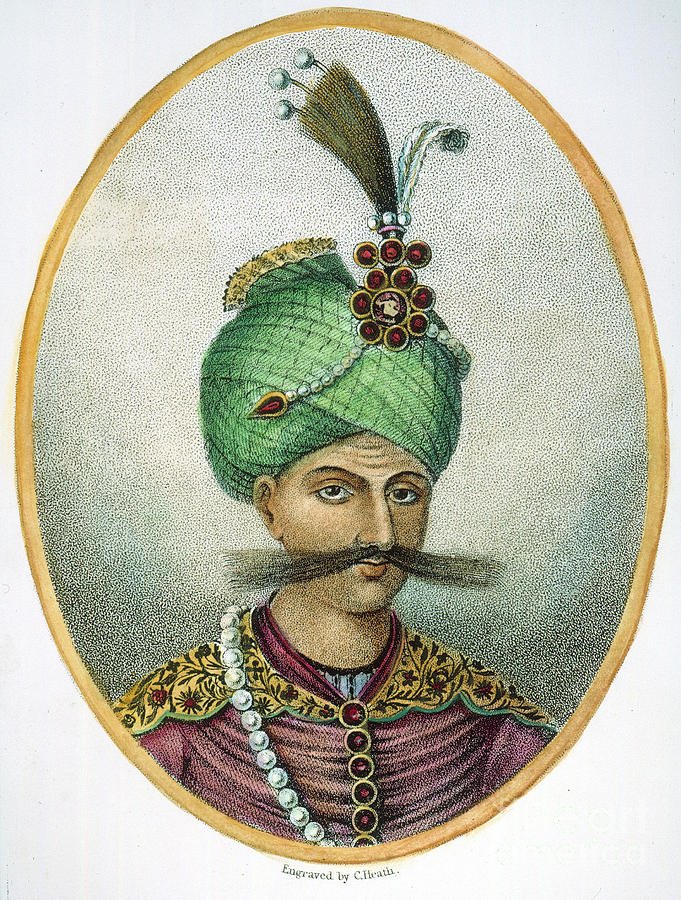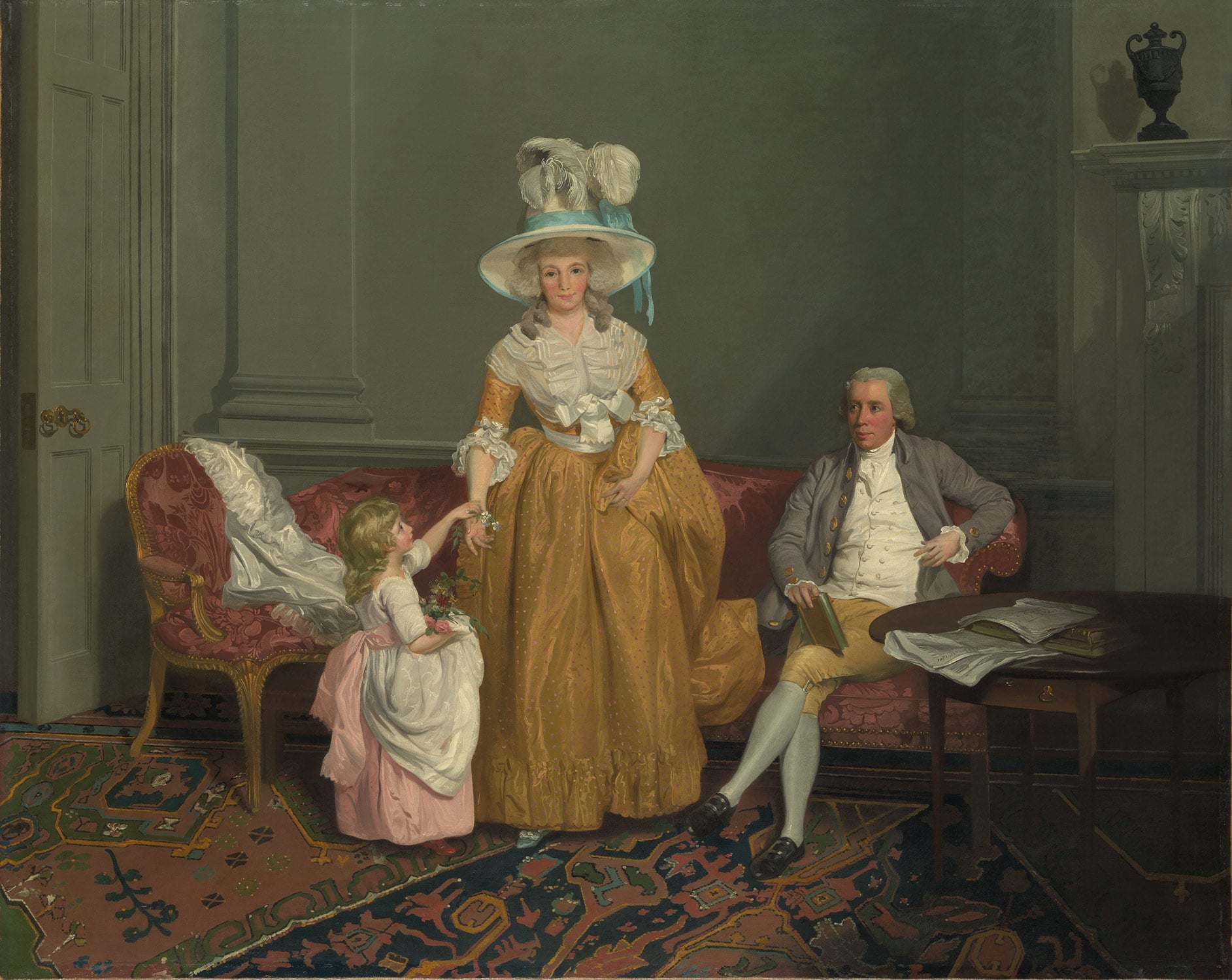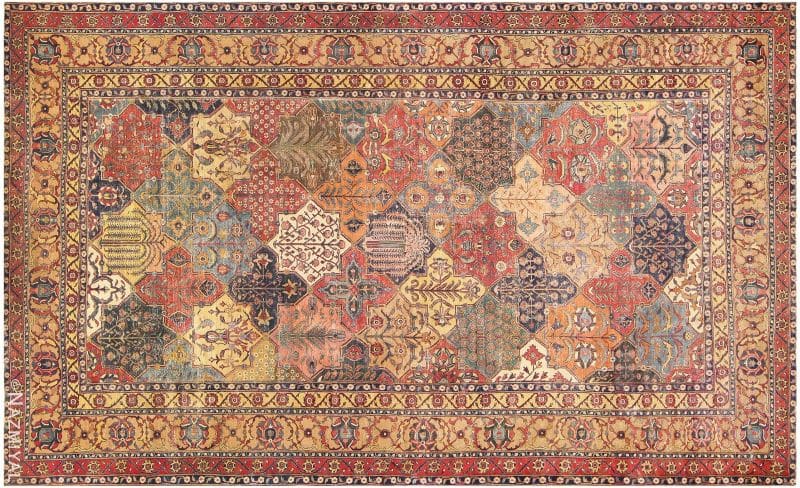
Islamic Art and Islamic Carpets in History
Many historical events left their impact on the development of the carpet industry and its design, and the spread of Islam and the emergence of Islamic art and Islamic carpets was one of those events that contributed to the emergence of new patterns and colors in carpets, and the design of Persian carpets was particularly influenced by Islamic traditions.
The roots of Islam and the Islamic world
Islam began in the Arabian Peninsula, then spread over several hundred years throughout Spain, the Byzantine Empire, the Sasanian Empire, and all over Asia. However, the area of the Islamic world has expanded and contracted throughout history.

Antique Islamic carpets
The spread of Islam in new areas means that local cultures and political changes will be affected by this, and this change includes almost all aspects of society and life, including the arts.
History of Islamic Art and Carpets
Islamic art as a way of life
Islamic art includes four basic components: calligraphy, plant patterns, pictorial representation, and geometric patterns. Therefore, Islamic art is more a way of life than just a presentation of the Islamic religion, as it includes a wonderful diversity and a personality of its own that has evolved with the passage of time.
Outstanding Islamic art
When many people imagine the Middle East, they imagine some of the basic components that indicate Islamic art, such as the unique architecture, calligraphy, and others... that characterize Islamic art.
What influenced Islamic arts?
Islamic art was influenced by the artists who worked under the Sasanian and Byzantine empires, as a new era of art emerged in that period, which is the result of merging the style of the indigenous people of those regions and the style of the Muslims, as an example of that the presence of some decorative features of Islamic art in many of the religious monuments that he worked on Muslim artists, including what was built during the Umayyad Caliphate, as in the Dome of the Rock Mosque.
The Umayyad Caliphate and its impact on Islamic art
The Umayyads brought architectural techniques from the Byzantines. The Dome of the Rock Mosque is the oldest Islamic building that was built in 1023 after its collapse. The Umayyads showed many innovations in architecture, as their technical prowess in architecture appeared at that time.
Experts classify Islamic art according to Islamic history and different strains. Some common strains include:
- Ottomans
- the Safavids
- Mongols
One of the wonderful things about Islamic art is that Muslims had so many different regional and national styles, which allowed for a great diversity of art, and we can see how Islamic art developed in each of those periods.
Islamic Art in Carpets: The most popular form of Islamic art in the cultural tradition
Carpet weaving is the most popular form of Islamic art in Muslim societies, and this beautiful art is famous for producing the "Oriental Carpet". The Persian ruler, Shah Abbas, developed an economic plan in the late sixteenth century for the carpet industry, by concluding trade treaties with Spain, England and France. As a result, the carpet industry moved from the hands of the peasants to the hands of distinguished artists, and soon carpet weaving became a national industry.

Shah Abbas is a historical force behind Islamic art and carpets
Royal families within Islamic societies owned the finest carpets, and royalty outside Islam also owned some of those pieces. By the early seventeenth century, Islamic carpets were mass-produced and became a status symbol in all European high-society families. floors, so it was also used on walls or covering furniture.
As for the oldest Islamic carpets, most of them have unfortunately disappeared! Therefore, early scholars had to rely on Italian and Flemish paintings, especially Renaissance paintings, to study the history of Islamic carpets, and those historical paintings became a major source of information on ancient Islamic carpet weaving.

The Saithwaite Family - Francis Wheatley, circa 1785

Young woman with a jug of water - Johannes Vermeer, circa 1660-67
The origin of carpets was often determined by moulds, style and design, especially the style of the knot, for example, Persian carpets were usually made with asymmetric knots, while Turkish carpets were made the other way around.
Antique carpets are a huge part of the history of Islamic art, serving as expressive and decorative images of Islamic history and a major entity in the exceptional art history of the world as a whole.
Islamic Carpets: From Homemade to Fine Art
Women have been weaving carpets for thousands of years throughout the Islamic world, and their techniques and designs have been passed down generation after generation. The introduction of Islam allowed the utilitarian practice of carpet weaving to elevate into a form of fine art in many regions of the world. Islamic carpets are no longer just practical pieces of furniture. It became a symbol of status and wealth and was woven for the royal courts of the Islamic world.
Many rural areas relied on traditional designs for carpets, and with the advent of Islam, they began to be inspired by new patterns and standardize production methods, and this was necessary to produce the magnificent royal court carpets that made their way into mosques and reception halls, and these carpets became part of the works of art that meet the desires and needs of the class ruling.
Patterns of new Islamic carpets under Islamic rule
The changes in carpet styles reflected; The development in the works of art found throughout the Islamic world, so the oriental carpets, for example, began to simulate the geometric patterns that were used in architecture, and carpets began to be produced with repeated motifs, and among the other styles that found their way to carpets is the “saz” style, in which flowers with leaves were used Curved elegant design.
The color palette in the carpets and its forms also evolved, and a wide range of floral designs such as roses, carnations, lilies, lotus flowers, trees and fruits were added, and the production of civil art continued with the addition of new forms of religious art to the mix of traditional local styles, which allowed the expansion of design possibilities in each of the centers production in cities and villages.

An example of garden rugs in Islamic art with an all-over design
Inclusion of calligraphy in Islamic carpets
A new element appeared in carpet design with the advent of Islam, which is the inclusion of calligraphy. Calligraphy is a stylized display of phrases and words in a way that makes it a beautiful piece of art, often looking like Arabic writing when it is actually a purely decorative form.

The kufic decoration of a Shirvan rug
A calligraphy that actually carries a linguistic meaning may include words or phrases from the Holy Qur’an, or perhaps verses from poetry. Early forms of this style appeared in the fifties of the fifteenth century AD, and words and phrases written in ornate Arabic called “Kufi” were placed in the margins of carpets, to be replaced in Finish with floral motifs and saz pattern.

Antique Persian rug with Arabic calligraphy
The inclusion of calligraphy and other detailed decorations required the production of finely woven Islamic carpets with a high density of knots, and the introduction of these elements meant a development in the design, quality, and processes of designing these carpets, and this also meant that carpet weavers had to follow a specific pattern instead of weaving carpet patterns from their imaginations, This transformation represented the formalization of the technical process of carpet making, and weaving schools and workshops were established to teach design and weaving to produce exquisite tile rugs.
The emergence of the Islamic prayer rug
The prayer rug was one of the most important design patterns that emerged in the world of carpet weaving under Islamic rule, and it is an important element for performing the five daily prayers, as the prayer rug provides a clean surface for performing prayers, whether in mosques, or in any other clean surface.

Islamic prayer rug
The introduction of Islam meant a new style of carpet specially designed to perform these rituals, these small carpets that are easy to carry, and which are distinguished by a design element known as the “mihrab”, or the place of prayer. While the top of the carpet is placed towards the direction of Mecca, as all worshipers are supposed to know the direction of the Qibla, no matter where they are in the world, this particular carpet is an important part of Islamic culture and art.

Mihrab design in antique Islamic prayer rugs
Prayer rugs are characterized by the ornate Islamic mihrab design, and include various designs that include flowers, geometry, and sometimes pictorial scenes (despite their rarity). Finishing prayers The carpet is carefully folded and treated as a sacred object, and this high status of this type of Islamic carpet means that there were many of them in previous centuries among other types of carpets.

Muslim man praying on an Islamic prayer rug
A new Islamic artistic philosophy
One of the differences between tribal carpets and Islamic court carpets is the way the symbols and patterns are designed. Tribal carpets are often woven according to ancient traditions, where motifs and symbols carry specific meanings that can be understood simply, and they are very similar to the primitive form of writing, taking into account The motifs found in Islamic carpet artwork do not carry a specific meaning, but rather represent a philosophy.
One of the most important examples of this is the use of tiled patterns in Islamic carpets, which aim to create beauty and harmony in the world and reflect the unity and diversity created by God.
Another thing that we can find in Islamic artwork when designing geometric shapes is the presence of a deliberate error, and this error indicates that there is no perfect human thing, and that error is hidden, and at other times it is completely clear, and this is according to the preferences of the artist.
Flora and fauna in Islamic carpets
Some sects of Islam prohibit "carved" images. However, many historical examples of carpets depicting plants, animals, and even people can be found in many areas that were under significant Islamic influence at the time the carpet was made. Adherence to these principles depended on the attitude of the local ruler towards This shows that the influence of Islam on artistic design was not generalized to all regions, and that local customs also played important roles.
Many artists used abstract paintings of plants, animals, and human forms as a form of adherence to this prohibition, and this was acceptable in some regions and prohibited in others, and this led to the emergence of many new artistic forms and motifs, and the influence of Islam was not uniform in all regions of the world Throughout the 1400 years of Islamic history, however, one rarely finds images of plants or animals on objects intended to be used for religious purposes, and many such products are found in the civil rather than the religious art of the Islamic world.
The spread of Islam around the world led to changes in all fields, and those changes depended on the faith adopted by the local rulers. The industry is home to the fine arts stage it is in now.
Patterns in Islamic Art
Thousands of years ago, a new art form was designed to express ideas and feelings that are associated with the religion of Islam, and this art form became distinctive for a great religion, spreading with the spread of Islam from one country to another.
Existing in many regions of the Middle East, Egypt, Morocco and Spain, Islamic art represents a rich history that reflects the culture of Islam, and is used in both religious and non-religious settings, as it is characterized by vibrant and complex patterns that express sophistication and symmetry, and most importantly, all of these different patterns are symbolic and within these patterns We find shapes such as stars, flowers, hexagons, and abstract shapes interacting with each other within intricate borders, whether it be on carpets, tapestries, curtains, wallpaper, book covers, or anywhere else.
There were many restrictions in Islam on works of art in all fields, including what was not allowed for Islamic artists to design or display their work, and there is a concept called " aniconism ", and it can be defined as "the prohibition of physical depiction of humans and animals", and it is believed that commitment In this sense, people are prevented from worshiping an image instead of worshiping God, and civil Islamic art may sometimes include depictions of humans and animals, but traditional Islamic art rarely finds this in it.
We can find Islamic art on the walls or on canvases hanging on the wall, or in the form of intricate and colorful motifs, and with a mixture of geometric shapes and abstract shapes, and the beauty of Islamic art is not limited to its appearance only, but in the way it is presented as a symbol of ideas and concepts that are appreciated in the culture Islamic.
Decorations are decorative designs and patterns, and among the most famous of these decorations in Islamic art, which are considered among the features that distinguish it, are the following decorations:
floral motifs
Geometric motifs
Line.
Below, let's explore some of the main characteristics of Islamic art, what influenced those characteristics, and some types of Islamic artwork.
1. Floral designs in Islamic art
Floral designs are used in Islamic art instead of images of people and animals, because floral designs symbolize growth and life, and flower designs can convey ideas about human life better than some people think, and there are specific types of flowers and plants that carry religious meanings in Islam.
Timurid manuscripts, Ottoman carpets and Safavid carpets were influenced by Islamic art, so the three categories contain floral patterns, flowers with four or five petals, and artworks from these categories also contain interlocking, rhythmic and/or graduated floral patterns, and this is called intertwining Also the name "Arabesque", it refers to those shapes that appear to be loose or closely knit together in a work of art, and rhythm in visual art is created through repetition of shapes and lines, and it is easier to design a rhythmic pattern in geometric shapes than in flowers and plants Spiral motifs refer to vines or curved lines intertwined in the artwork. To perfect these designs, artists use techniques such as grids, with some designs drawn by hand. With a lot of practice, elegant and symmetrical designs can be obtained.

Khorasan carpets feature an arabesque (also known as Islamic) design.
2. Geometric patterns in Islamic art
Geometry in Islamic art includes a variety of shapes that represent patterns that reflect the language of the universe, metal, paper, wood, glass, carpets, ceramics, jewellery... These are just a few of the shapes in which geometric patterns are commonly found, often overlapping Geometric patterns with frame floral and calligraphy design.
The use of stars in Islamic art patterns began with the 9th century. Islamic art is characterized by 6-pointed stars. The 13-pointed stars appeared in 13th-century patterns. Over time, artists continued to develop techniques and use stars with more points.
Geometric designs in Islamic art focus on depicting shapes and inanimate objects. The complexities of geometric designs encourage people to examine them closely and try to discover their meanings. These designs are described as knots and spiral motifs, given that lines and shapes in art convey movement. When looking at this type of design , the viewer's eyes automatically move around the artwork to follow the implied movement of the objects in the work.
3. Calligraphy in Islamic art
Calligraphy is one of the main features of Islamic art and is believed to be a means of celebrating the love and remembrance of God Almighty. Verses from the Holy Qur’an are inscribed as pieces of art in an expressive and harmonious way. These patterns are widely found on ceramics and metal work, on the walls and ceilings of mosques, on the walls of schools, and on the walls of Many other buildings in Islamic countries, and these noble verses are usually written in Arabic, Persian or Turkish.

Calligraphy is found in many forms of Islamic art
The traditional Islamic art that includes calligraphy is designed using two different types of pens, one of the pens is called “jalam” and it is made of all natural wood, while the other type of pens has a metal tip, and the materials used in carving calligraphy are mostly paper, tiles or pots, rugs or stone.
Translated by: nazmiyalantiquerugs.com
Share
As a Muslim, my <a href=https://buymode.shop/are-en/category/prayer-mats-stargold/61545b35307d383faef1cbca > prayer mat is a treasured possession. It’s a symbol of my faith and a reminder of my connection to Allah. I couldn’t imagine praying without it.
محتوى راءع شكرا



























